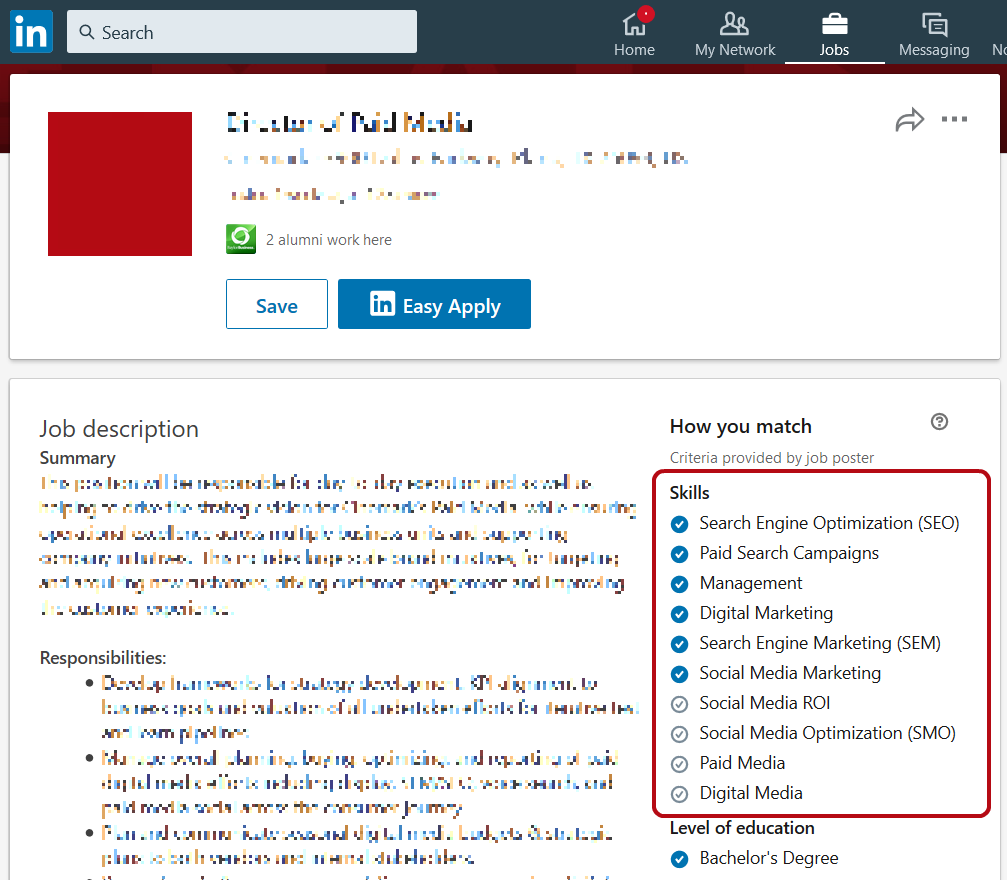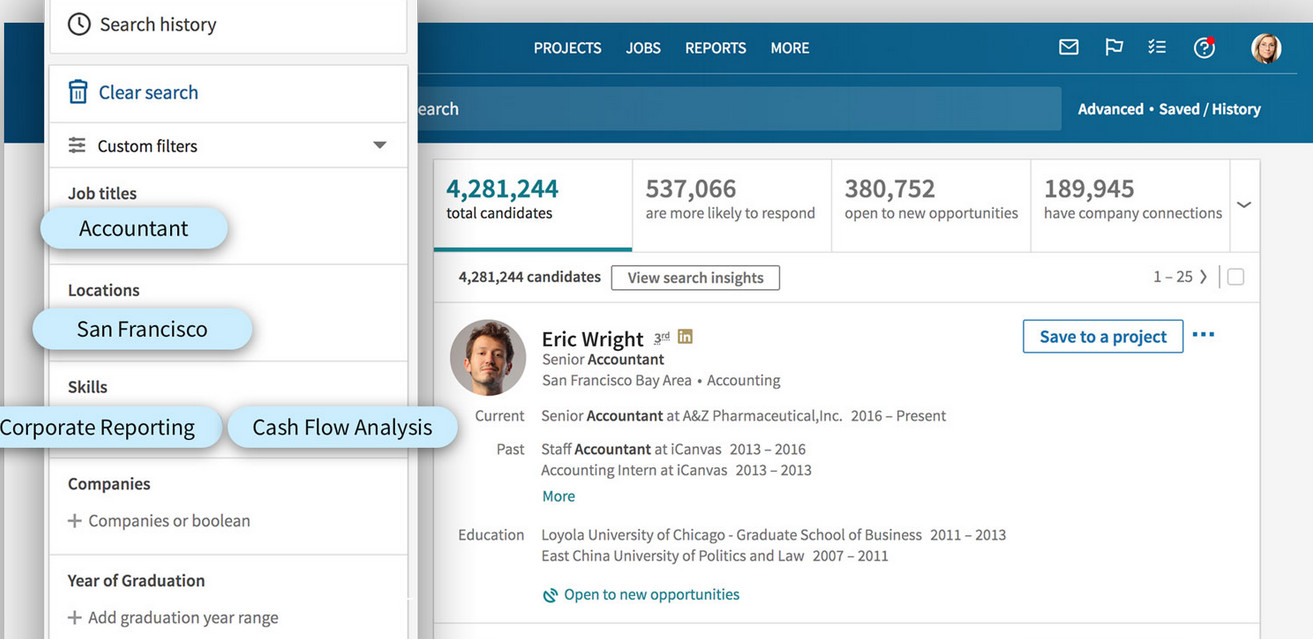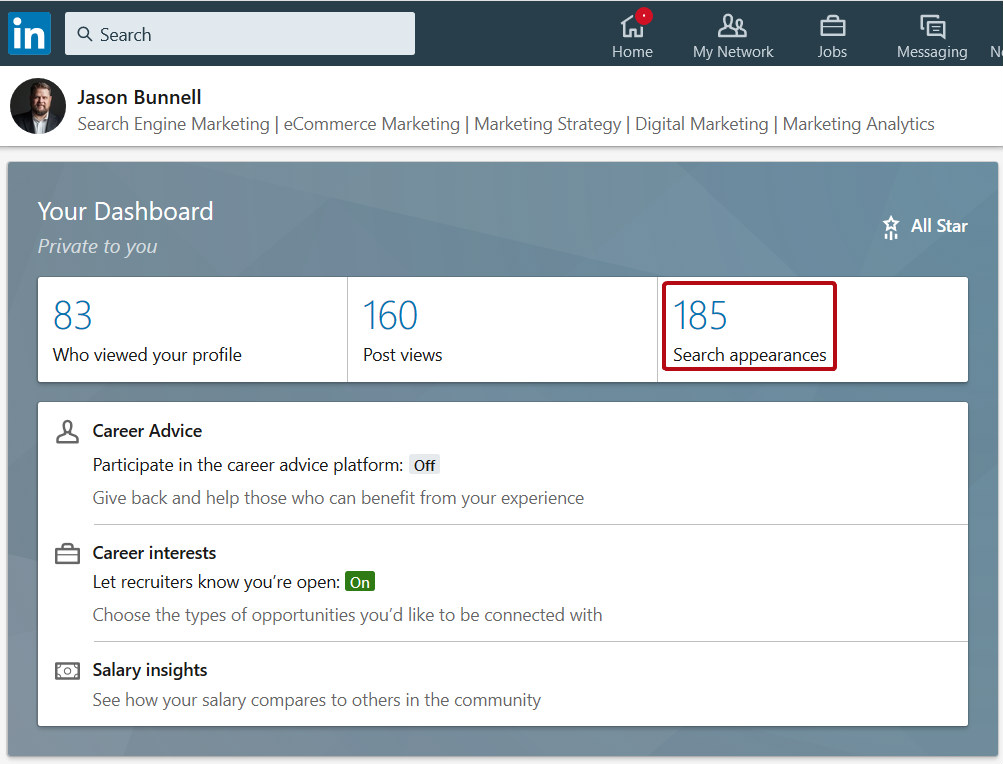Recently I started looking for my next role and I decided to apply search engine marketing (SEM) and Search Engine Optimization (SEO) techniques to that search. It has been so effective that I have shared it with a few friends and decided to write a quick guide. In fact, so broad is this topic, I am going to break this up into a few topics. This is the covering the first topic: keyword research. You can see a few screenshots at the bottom of this post. Here are the other topics and as I complete this guide, I will update with links:
- Keyword Research
- Resume & Portfolio Page
- Job Search Sites Guide
Results
There are really two factors I have used to gauge how well this has worked. First, I was getting about 5ish calls or emails from recruiters per month before doing this and closer to 20 calls per month after. So probably about a 4X increase in touches from recruiters. Also, LinkedIn the number of impressions your profile has received from searches on site. So this is when a recruiter is searching for a skill and you have appeared. You can find this number on your profile page just below your description in the section titled Your Dashboard. At the top there is a section that says Search Appearances (see image below…image 1 of 3). This has also increased about 3 to 4 times. In short, this is why I think this exercise is so important. It increases your exposure to recruiters that are searching for skills. And that is where we are going to start: identify the skills you have that are most relevant to the roles you are looking for. There is another benefit that is harder to quantify. I feel the roles I have been contacted about are better quality and closer to what I am looking for because I have removed a lot of skills that are no longer as relevant to what I am looking for. At one point I had several finance roles but now I am looking for marketing roles. So those skills are great, but not as relevant in what I am currently looking for.
Create A List of Keywords or Skills
If I was working for a brand that wanted to run some SEM campaigns, I would start by looking at keywords they are currently ranking well for and then a larger list of related keywords that they probably want to rank for. Those lists are usually have different keywords and that is why the exercise is important. If you are selling desks, you don’t want to rank for “rustic desks” if “farmhouse desks” are more frequently searched for. In the same respect, you may have skills that might be searched for in a number of ways and you want to be sure you are using the term that recruiters are searching for most often. How do you do this? The best way I have found to identify skills that recruiters are searching for is to track skills listed on roles posted on LinkedIn. I looked at over a dozen job postings on LinkedIn and copied the skills into a worksheet to see which skills were most common. Each time I applied to a role, I was sure to add that to the list which continued to grow a list of relevant keywords and skills. They are not on every job posting but on many on the right column there is a section How You Match and below that Skills and below that should be about a dozen skills that are considered most important to the role. Also, those skills will have either a blue or white check to indicate if LinkedIn believes you have that skill or not. Like me, you might be thinking, “but wait! I have that skill!” You need to make a list of those skills for about a dozen related roles that you feel are a good fit for you and identify the skills/keywords that are most common. I made a list that showed the skill, 0 for not and 1 for having that skill, the company, the title, and date posted. I then made a pivot table that showed how frequently those skills appeared. Not only does that show you the most frequently listed skills for the types or roles you are seeking, but if you are deemed to have them. The top 5 most common skills for the role I was looking for were marketing, search engine marketing (SEM), management, advertising, pay per click (PPC). More importantly, I found for I have many of the frequently listed skill but LinkedIn did not think I did. So what do you do in this case?
Optimize Your Resume, Portfolio Page, and Job Profiles
I will go into this in more detail in another post, but essentially you need to make sure you have those skills mentioned in the description of every role you have listed on LinkedIn with quantification when possible. The most important you are probably going to want to have the most important in your headline and main description. In fact, right now I have 6 skills in my headline on my LinkedIn profile. In my description section below the brief paragraph, I have listed another 30 skills. Most people do not even see this, but the text is there for LinkedIn to index. Then in the bullets of my prior roles, I tried to mention as many of those skills that I actually used in that role with quantification where I could. One thing I would add: do not feel you need to hit every skill listed, just the most relevant skills you actually possess. In the example below (image 3 of 3) the role listed “Social Media Optimization”. There can be several ways to list a skill and in this case it is also called “Content Optimization” or “Merchandising”. In looking at over a dozen roles, I created a list of about 70 skills 2/3rds of which were only listed on one role. I would focus on the skills used more frequently. Also, listing a skill that you have no experience with is going to come across as lying and get you eliminated quickly. So I would also be sure to not list a skill unless you can demonstrate how you have used that in a previous role.
Conclusion
Recruiters and job search sites are giving you some great information and making note of that is going to help you tremendously in landing your dream job. This will not only increase the number of times you appear in search results, but the number of times your profile is likely clicked on.





